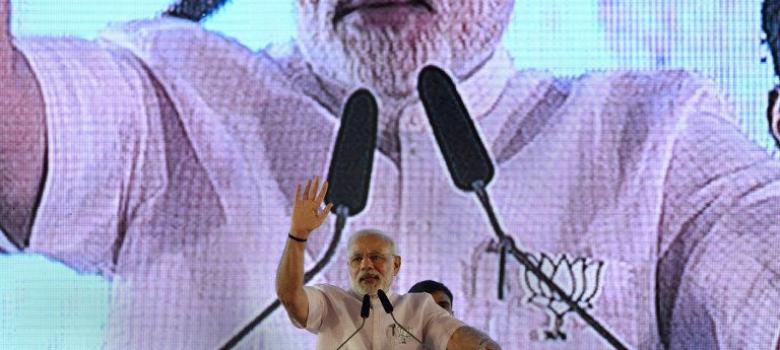One year on, here’s how India’s economy has changed under Narendra Modi

On May 26, 2014, India’s prime minister Narendra Modi began his term in office amid great expectations.
Corporates, economists, and investors were betting on big bang reforms, which would kick-start growth.
The jury is still out on the economic achievements of his first year in power, the Modi government has at least given India’s gross domestic product numbers a bit of a boost.
From 4.5% in the 2013 fiscal year, the growth rate jumped up to 6.9% for the 2014 fiscal, as the country’s central statistics office changed the way of computing the GDP by changing the base year, and adding some more components.
That makes India one of the fastest growing economies of its size in the world, poised to even overtake China, Asia’s largest economy. Apart from these glowing GDP estimates – which some economists say are a joke – here are some other key indicators that reveal how India’s economy has done in its first year under prime minister Modi:
First of all, the global fall in crude oil prices have been a big help to the economy. The free fall in prices played their part in trimming India’s import bill, and saving on foreign exchange. Almost two-thirds of the country’s oil is imported.
Wholesale price inflation – which represents the price of goods traded in bulk – has substantially eased from April 2014, but now is in the negative territory. In March 2015, it fell to the lowest level in nine years. This was primarily because prices of manufactured products dropped, which isn’t exactly a good sign for industry.
Growth in consumer price inflation, or retail inflation – an indicator of consumption expenses – has also eased in the last one year to 5.17% in March. It is now well within the Reserve Bank of India’s (RBI) target of maintaining 6% retail inflation until January 2016. The RBI’s interest rate trajectory depends on the retail inflation growth in the country.
Meanwhile, equity investors in India have been resoundingly optimistic after Modi took charge. India’s benchmark index, the Sensex, touched 30,000 points level, its highest ever, in intra-day trading on March 4, 2015, when RBI governor Raghuram Rajan cut the repo rate.
Lately, however, the markets seem to be losing steam, and certain tax issues for foreign institutional investors might slow investments. Additionally, in the absence of any major on-ground reforms, investors’ patience may also be wearing thin.
The Index of Industrial Production has shown significant improvement since October last year, indicating that industrial activity in the country may finally be seeing a revival. The IIP measures growth in important sectors like manufacturing, mining and electricity, among others. Analysts believe that industries in India might be witnessing a turnaround now.
But the Indian rupee is still under pressure. The currency has been volatile in recent months, mainly because of external factors. The US Federal Reserve’s impending interest rate hike has boosted the dollar, as the American economy shows signs of improvement.
[“source-scroll.in”]
